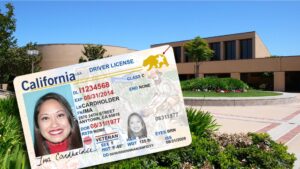
(CLAIR | Ventura, CA) — California’s drive toward a greener future could hit drivers right in the wallet — not at the pump, but by the mile.
As electric vehicles surge across the state, replacing gas-powered cars and slashing emissions, lawmakers are confronting a new problem: a $6 billion hole in the state’s future road repair budget. The culprit? Lost gas tax revenue — a cornerstone of California’s transportation funding system for over a century.
To fill the gap, the state is now exploring a controversial solution: a per-mile tax that would charge drivers based on how far they travel, rather than how much gas they burn.
From Pump to Pavement
California currently boasts the highest gas taxes in the nation, with drivers paying between 60 and 70 cents per gallon. That’s helped generate billions in revenue annually — over $7.4 billion in 2022–2023 alone. But with over 1.1 million electric vehicles on the road and a state mandate banning new gas car sales by 2035, the financial engine behind road maintenance is slowing down.
Transportation officials say maintaining California’s vast network of highways, streets, and bridges — totaling over 400,000 lane-miles — will cost $758 billion over the next decade. Yet with declining gas sales, the state expects to raise just $541 billion, much less than what is needed.
The Road Charge Pilot
The proposed “California Road Charge” would shift the funding model from fuel to mileage. A six-month pilot program launching this August will test how such a tax could work in practice. 800 volunteers will be split into two groups:
One group will pay a flat rate of 2.8 cents per mile — calculated to mirror what they’d pay in gas taxes.
The other group will pay based on their vehicle’s fuel efficiency (e.g., a Toyota Prius could pay around 1.05 cents/mile, while a gas-guzzling Bugatti might owe 6.62 cents/mile).
Participants will be compensated with credits for gas taxes already paid and may receive up to $400 in incentives.
Voices of Concern
Critics across the state are pushing back hard, including the Ventura County Taxpayers Association, which formally opposes the per-mile tax.
“This isn’t a new problem,” said a VCTA spokesperson. “The decline in gas tax revenue was entirely foreseeable as California pushed electric vehicles. Now Sacramento is scrambling to fix a gap it should’ve planned for.”
According to VCTA, the existing gas tax system is already bloated and under-delivering. The state collects $1.28 billion per month from the gasoline excise tax, yet only $600 million of that is used for road repairs — the rest goes to other programs.
“We believe the mileage tax won’t replace the gas tax — it will stack on top of it,” VCTA stated. “That’s not reform. That’s double taxation.”
The group also raised alarms about privacy and government intrusion. “Imagine Sacramento tracking the mileage of 27 million Californians every month. Whether it’s GPS, odometer checks, or vehicle devices, every method they’ve tested is invasive. It’s bureaucracy run wild.”
Citing figures from Reform California, VCTA estimates the mileage tax could cost the average driver $900 to $1,200 per year, calling it a financial blow to everyday families.
However, the organization did agree on one key point: fairness.
“We’ve been subsidizing the wealthy,” VCTA noted. “EVs are primarily driven by higher-income individuals who avoid paying gas taxes while using the same roads. The people most able to pay for road upkeep are currently riding for free. That has to change.”
What About EVs?
Many lawmakers see the per-mile tax as a way to level the playing field. Electric vehicle owners currently pay minimal registration fees — nowhere near the cost of road use.
But the proposed system still raises ethical and logistical red flags. “We need to strike a balance,” said California’s Road Charge Program Manager, Lauren Prehoda. “Yes, fairness matters. But so does privacy. So does simplicity. That’s what this pilot is about — finding a method that works in the real world, not just on paper.”
The Road Ahead
No final decision has been made — and if history is any guide, the political journey will be rough. California voters have long resisted new transportation taxes, even while complaining about potholes, traffic, and aging infrastructure.
Still, with gas tax revenue falling and road costs rising, the state faces a question with no easy answer: How do you pay for roads in a world without gasoline?
As the debate rolls forward, one thing is clear — the future of driving in California is about more than what you drive. It’s about how far you go — and who’s footing the bill to get you there.















